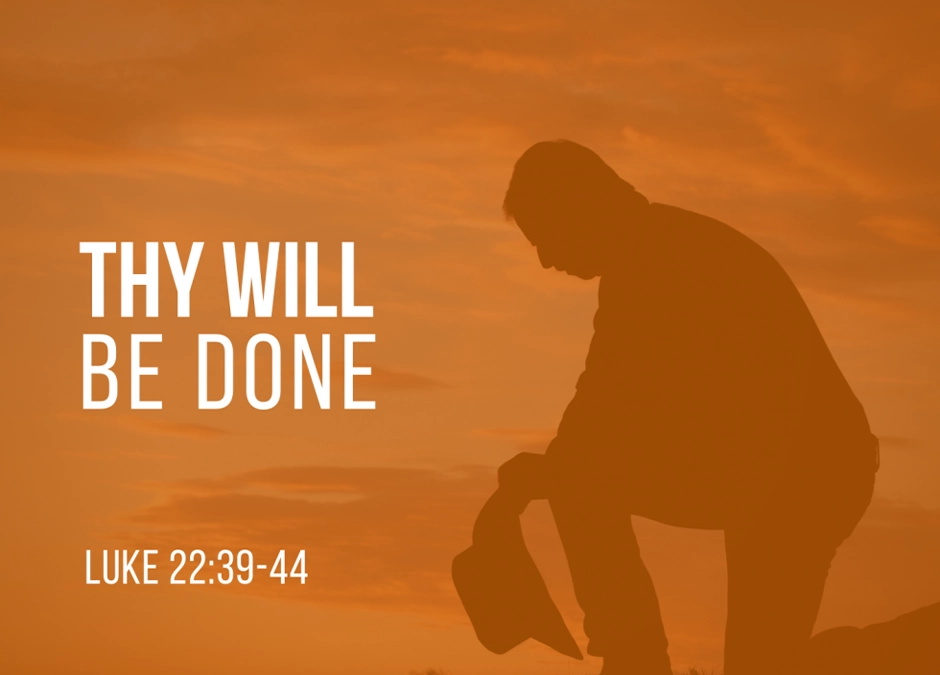Understanding the Phrase “Your Will Be Done”

The phrase “Your will be done” encapsulates a profound concept of submission and acceptance, deeply rooted in various religious and philosophical traditions. It signifies a relinquishment of personal desires and intentions, opting instead for a higher power’s plan. This surrender can be interpreted in numerous ways, ranging from passive acceptance to active participation in a perceived divine order.
The phrase, in its various forms, echoes across millennia, reflecting evolving societal and spiritual contexts. It serves as a reminder of the potential for human agency within the framework of a larger, often unseen, design.
Historical and Religious Context
The concept of “Your will be done” finds its origins in religious texts. Its appearance in various traditions highlights a shared human need to grapple with the unknown and the perceived forces shaping our lives. In Christianity, it is famously associated with Jesus’s prayer in the Garden of Gethsemane, where he submitted to the Father’s will. This act of acceptance is seen as a model for followers. Similar sentiments are expressed in other faiths, demonstrating a universal theme of aligning oneself with a higher power.
Different Interpretations Across Belief Systems
Interpretations of “Your will be done” vary significantly across different belief systems. In Christianity, it often emphasizes surrender to God’s plan, a path to spiritual growth. In Buddhism, it might be interpreted as acceptance of impermanence and the interconnectedness of all things. For those with secular perspectives, it might signify a commitment to accepting life’s inevitable challenges and uncertainties. The phrase’s adaptability across beliefs underscores its broad applicability to diverse experiences.
Philosophical Implications of Accepting “Your Will Be Done”
The philosophical implications of accepting “Your will be done” are profound. It encourages a shift in perspective from self-centeredness to a recognition of a larger, more comprehensive reality. This can lead to greater resilience in the face of adversity, fostering a sense of acceptance and purpose that transcends individual limitations. It invites individuals to question their assumptions and embrace a sense of humility and trust in a higher power, whether understood as divine, natural, or simply the unfolding of events.
How People Have Used This Phrase Throughout History
The phrase “Your will be done” has been used in countless ways throughout history. From religious ceremonies to personal reflections, it has served as a guiding principle for individuals and communities. It’s a testament to human resilience and faith, appearing in prayers, hymns, and everyday conversations, offering a framework for navigating life’s complexities. It’s often used in times of personal struggle, crisis, or as a means of finding solace.
Comparative Table of Interpretations
| Religion | Interpretation of “Your Will Be Done” | Key Concepts |
|---|---|---|
| Christianity | Submission to God’s plan, a path to spiritual growth, acceptance of divine will. | Faith, surrender, grace, divine purpose |
| Buddhism | Acceptance of impermanence, interconnectedness of all things, detachment from personal desires. | Impermanence, karma, mindfulness, compassion |
| Islam | Submission to Allah’s will, striving for righteousness, fulfilling one’s purpose within the framework of Islam. | Tawhid, submission, jihad, predestination |
| Hinduism | Acceptance of dharma (duty), recognizing the interconnectedness of all beings, and understanding the cyclical nature of existence. | Dharma, karma, reincarnation, moksha |
The Concept of Belief
Belief plays a fundamental role in shaping human experience and influencing actions. It’s a deeply personal and multifaceted concept, encompassing faith, trust, conviction, and a sense of certainty. Understanding the psychological underpinnings of belief, the various types of beliefs, and their impact on individuals is crucial for comprehending human behavior and potential.
Beliefs, whether consciously held or subconsciously ingrained, act as filters through which we interpret the world. They shape our perspectives, influence our choices, and ultimately affect our outcomes. This section delves into the psychological intricacies of belief, highlighting the interplay between belief and action.
Psychological Aspects of Belief
Beliefs are deeply ingrained psychological constructs. They are not simply intellectual assent to propositions; rather, they involve a complex interplay of cognitive, emotional, and social factors. The formation of beliefs is influenced by personal experiences, cultural norms, and social interactions. These factors interact in intricate ways to form a unique belief system for each individual. For example, a person who has experienced consistent success in a particular field may develop a strong belief in their abilities, fostering confidence and perseverance.
Types of Beliefs and Their Impact
Belief systems are diverse and vary significantly among individuals. They encompass a wide range of convictions, from religious and spiritual beliefs to personal values and philosophical outlooks. These beliefs can be categorized into several types:
- Core Beliefs: These are fundamental convictions that serve as the bedrock of a person’s worldview. They are deeply ingrained and often resistant to change. Core beliefs often dictate how an individual perceives the world and their place in it.
- Peripheral Beliefs: These beliefs are less central to an individual’s identity and are more easily influenced by external factors. They may be more flexible and susceptible to modification.
- Explicit Beliefs: These are beliefs that are consciously held and readily articulated by an individual.
- Implicit Beliefs: These are beliefs that are held subconsciously and may not be easily expressed. They often influence behavior and decision-making without conscious awareness.
The impact of beliefs on individuals is profound. Positive beliefs, such as self-efficacy and optimism, can foster resilience, motivation, and well-being. Conversely, negative beliefs, such as self-doubt and pessimism, can hinder progress and contribute to psychological distress.
Role of Faith and Trust in Achieving Desired Outcomes, How to say your will be done and believe it
Faith and trust are essential components of belief. Faith involves believing in something without empirical proof, often rooted in spiritual or religious convictions. Trust, on the other hand, involves confidence in the reliability and integrity of another person or system. Both faith and trust are powerful motivators that can propel individuals toward achieving their goals. For instance, an entrepreneur who has faith in their vision and trusts their team is more likely to succeed.
Importance of Conviction in Personal Growth
Conviction is the firm belief in something. It is the unwavering commitment to a particular value, principle, or idea. Conviction is essential for personal growth because it provides the drive and determination needed to overcome obstacles and achieve desired outcomes. Individuals with strong convictions are often more resilient and persistent in the face of adversity. They are more likely to pursue their passions and make significant contributions to their fields.
Connection Between Belief and Action
Beliefs are inextricably linked to action. A strong belief in one’s ability to succeed often translates into a greater willingness to take action and persevere through challenges. Conversely, a lack of belief can lead to inaction and avoidance of potentially rewarding opportunities. For example, someone who believes in the power of education is more likely to pursue higher learning and invest in their future.
Factors Influencing Belief Systems
| Factor | Description |
|---|---|
| Personal Experiences | Early childhood experiences, significant life events, and personal encounters shape core beliefs. |
| Cultural Norms | Cultural values and traditions often influence individual beliefs. |
| Social Interactions | Relationships and interactions with others can reinforce or challenge existing beliefs. |
| Education and Exposure | Educational opportunities and exposure to diverse perspectives can broaden and modify belief systems. |
| Media Influence | Media portrayals and messages can shape perceptions and beliefs. |
Practical Application of “Your Will Be Done and Believe It”

Embarking on a journey of aligning with the principle of “Your Will Be Done and Believe It” necessitates a shift in perspective. It’s not about passively accepting fate, but actively engaging with the universe’s flow, understanding that our efforts contribute to a greater design. This involves recognizing that our actions, when aligned with this principle, create a synergy that fosters positive outcomes.
This practical application encompasses understanding the interplay between our intentions and the external world. By consciously embracing the principle, individuals can find clarity and guidance in navigating life’s complexities. It’s a testament to the power of faith and intentionality, allowing for a more profound connection with the universe’s rhythm.
Examples of Practical Application
Numerous individuals have successfully integrated this principle into their lives, finding a sense of peace and purpose in the process. For instance, entrepreneurs who believe in their business’s potential, despite facing obstacles, persevere and often achieve remarkable success. Similarly, individuals who encounter adversity but remain steadfast in their belief that their actions align with a greater plan often emerge stronger and more resilient. These examples demonstrate that faith in the principle, coupled with consistent action, can lead to extraordinary results.
Methods for Cultivating Belief
Cultivating a belief in “Your Will Be Done” involves consistent introspection and mindfulness. Engaging in meditation or prayer can foster a deeper connection with the underlying principle. Practicing gratitude for the present moment, acknowledging the abundance in life, and actively seeking opportunities for growth are also vital components.
Practical Steps for Putting the Phrase into Action
Consistent practice is key to incorporating this principle into daily life.
- Acknowledge the principle as a guiding force in your life. This involves a conscious effort to align your actions and intentions with the concept.
- Regularly reflect on your motivations and actions. Consider whether they are in harmony with your belief in “Your Will Be Done.”
- Embrace uncertainty and trust in the process. Life’s journey is often filled with unexpected twists and turns. Acceptance and trust are crucial.
- Practice patience and persistence. Results may not always be immediate. Remain committed to your path and trust in the unfolding of events.
Comparing and Contrasting Approaches
Different approaches to aligning with “Your Will Be Done” can be categorized. For example, some individuals might focus on meditation and prayer, while others might prioritize action and service. A comparison highlights the diversity of approaches and their potential benefits.
| Approach | Focus | Potential Benefits |
|---|---|---|
| Meditation and Prayer | Inner peace, connection with the divine | Reduced stress, increased clarity, deeper understanding |
| Action and Service | Active engagement in the world, contributing to a greater good | Sense of purpose, fulfillment, positive impact on others |
| Acceptance and Trust | Embracing uncertainty, letting go of control | Reduced anxiety, increased resilience, greater adaptability |
Overcoming Obstacles
Obstacles are inevitable in any endeavor. When confronted with challenges, maintaining faith in the principle is crucial. It’s essential to remember that setbacks are often opportunities for growth and refinement. Practice self-compassion and resilience. Re-evaluate your approach and adjust your actions if necessary. Ultimately, a steadfast belief in “Your Will Be Done” provides a framework for navigating these obstacles.
Potential Benefits and Challenges

Embracing the principle of “Your Will Be Done” and believing it to have been prepared often involves a significant shift in perspective. This shift can lead to profound personal growth and a more fulfilling life, but it also presents certain challenges. Understanding these potential benefits and obstacles is crucial for navigating this path successfully.
Embarking on this journey requires careful consideration of the potential rewards and the obstacles that may arise. It necessitates a willingness to surrender control and trust in a higher power or a greater plan, while simultaneously confronting the uncertainty and potential discomfort that this entails.
Potential Benefits of Embracing the Principle
A key benefit is the reduction of anxiety and stress. By relinquishing control, individuals can release the burden of worry about outcomes and focus on the present moment. This can foster a sense of peace and tranquility. Further, this approach can lead to greater resilience in the face of adversity, as individuals learn to trust in a greater plan.
- Increased inner peace: By accepting circumstances as they unfold, individuals can cultivate a greater sense of serenity and contentment, regardless of external factors.
- Improved decision-making: Trusting in a higher power can free the mind from the pressure of making every decision, allowing for more intuitive and aligned choices.
- Enhanced relationships: Accepting others’ choices and circumstances with understanding can lead to healthier and more supportive relationships, fostering compassion and empathy.
Potential Challenges and Obstacles
Implementing the principle of “Your Will Be Done” and believing it prepared can be challenging. Trusting in something unseen or unknown can be difficult for some individuals. Furthermore, this approach may not always yield immediate or visible results, which can lead to doubts and questions.
- Difficulties with surrendering control: Letting go of the need to control outcomes can be difficult for those accustomed to taking charge and making decisions. This often involves overcoming ingrained habits and patterns of thought.
- Potential for feelings of helplessness or frustration: If not properly understood or implemented, this approach may lead to a sense of powerlessness or frustration when things don’t go as planned. Understanding that the plan may not be immediately apparent is crucial.
- Struggles with trust and faith: Maintaining trust in a higher power or a greater plan when faced with challenges or setbacks can be a significant hurdle. Cultivating faith is an ongoing process that requires introspection and patience.
Potential Pitfalls and Common Errors
Misunderstanding the principle of “Your Will Be Done” can lead to several pitfalls. One common error is misinterpreting this principle as a passive acceptance of suffering or hardship without proactive efforts. This approach is detrimental and not reflective of true surrender.
- Passive acceptance of negative circumstances: It’s essential to distinguish between accepting a situation and passively enduring hardship. This principle encourages proactive steps to navigate challenges within the context of faith.
- Confusing surrender with inaction: Surrender does not equate to inactivity. It involves trusting in a higher power’s plan while actively working towards one’s goals and responsibilities.
- Failing to seek guidance and support: This principle is not meant to isolate individuals. Seeking guidance and support from trusted individuals or mentors is essential for navigating the process successfully.
The Role of Surrender in the Principle
Surrender, a critical component of “Your Will Be Done,” involves relinquishing control over outcomes and trusting in a higher power or a greater plan. This doesn’t imply passivity but rather a conscious choice to align with a larger purpose beyond personal desires. This active surrender is essential to accepting the unknown and trusting the process.
- Understanding surrender as a conscious choice: Surrender isn’t about giving up; it’s about choosing to trust a greater plan, even when the path isn’t clear.
- Surrender as a pathway to peace and resilience: By relinquishing control, individuals can cultivate inner peace and develop resilience to navigate life’s challenges with greater ease.
- Surrender as a catalyst for growth: The process of surrender often prompts introspection and self-discovery, leading to personal growth and a deeper understanding of oneself and the world.
Pros and Cons of this Approach
| Pros | Cons |
|---|---|
| Increased inner peace and resilience | Potential for feelings of helplessness or frustration |
| Improved decision-making and relationships | Difficulties with surrendering control |
| Enhanced trust and faith | Misinterpretation as passive acceptance of suffering |
| Active participation in a larger plan | Confusing surrender with inaction |
| Proactive navigation of challenges | Struggles with trust and faith |
Mindset and Self-Talk: How To Say Your Will Be Done And Believe It

Cultivating a positive mindset and employing effective self-talk are crucial for internalizing the principle of “Your Will Be Done.” This involves actively shaping your inner dialogue to align with the concept of surrender and trust in a higher power or a larger plan. This inner work strengthens resilience and allows you to navigate challenges with greater peace and acceptance.
A resilient mindset is characterized by the ability to bounce back from setbacks, maintain optimism even in difficult times, and learn from experiences. This is vital in accepting that your will might not always align with a larger plan. By practicing self-compassion and understanding that setbacks are part of the process, you can cultivate a more resilient attitude towards life’s challenges.
Strategies for Positive Self-Talk
Positive self-talk involves replacing negative or self-critical thoughts with affirmations and encouraging statements. Regular practice can shift your perspective and enhance your emotional well-being. Focus on acknowledging your strengths and accomplishments, rather than dwelling on perceived imperfections.
Cultivating a Resilient Mindset
Resilience is the ability to recover from adversity and bounce back from challenges. Building a resilient mindset involves developing coping mechanisms, learning from mistakes, and maintaining a sense of hope. It’s about understanding that difficulties are temporary and that you have the strength to overcome them. This resilience isn’t about avoiding difficulties, but rather about approaching them with a proactive and resourceful attitude.
Affirmations and Visualizations
Affirmations and visualizations are powerful tools to reinforce the principle of “Your Will Be Done.” They act as mental anchors, helping you maintain focus and faith in the process. A consistent practice will create a stronger connection to the concept and foster a more positive mindset.
- Affirmation 1: “I trust the process. My will is aligned with a greater plan.” This affirmation focuses on trust and alignment.
- Affirmation 2: “I embrace challenges as opportunities for growth and learning.” This affirmation focuses on the positive aspect of challenges.
- Visualization 1: Visualize yourself effortlessly navigating obstacles, with a sense of calm and peace. This visualization emphasizes the ease and serenity that comes with surrender.
- Visualization 2: Visualize yourself receiving support and guidance from a higher power or source, as if you are part of a larger plan. This visualization emphasizes the feeling of being cared for and supported.
Techniques for Managing Negative Thoughts and Emotions
Negative thoughts and emotions can arise when facing challenges or when your will clashes with a perceived larger plan. It’s important to acknowledge these feelings without judgment and use constructive techniques to manage them.
- Mindfulness Meditation: Focusing on the present moment can help detach from negative thoughts and emotions. By observing your thoughts and feelings without getting carried away, you gain perspective.
- Journaling: Writing down your thoughts and feelings can help process emotions and gain clarity. It allows for reflection and helps identify patterns in your thinking.
- Deep Breathing Exercises: Slow, deep breaths can calm the nervous system and help regulate emotions, providing a sense of grounding during stressful times.
Visualization Exercises
Visualization exercises are powerful tools for reinforcing the concept of “Your Will Be Done.” By vividly imagining positive outcomes and trusting the process, you can cultivate a more positive and hopeful mindset. This can strengthen your belief in a larger plan and foster a sense of acceptance.
- Guided Imagery: Use guided imagery scripts or recordings to create a vivid mental picture of a situation aligning with your will. Focus on the details, sensations, and emotions associated with that scenario. This allows for a more immersive and effective visualization.
- Self-Affirmations during Visualization: Incorporate affirmations while visualizing. For example, repeat “I am open to the possibilities of the universe,” or “I trust the process” while envisioning a desired outcome. This combination reinforces the affirmations and strengthens the connection to the principle.
The Role of Action and Acceptance

Embracing the principle of “Your Will Be Done” necessitates a dynamic interplay between belief, action, and acceptance. Simply believing without translating that belief into tangible actions is insufficient. Similarly, passively accepting without actively engaging with the path of least resistance can lead to stagnation. This section delves into the vital roles of action and acceptance in aligning with one’s perceived will.
Action, in tandem with belief, serves as a powerful catalyst for manifesting desired outcomes. It’s the bridge between intention and realization. When belief is coupled with deliberate action, it creates momentum and a tangible pathway towards the desired outcome. The act of taking action reinforces the belief, creating a positive feedback loop that strengthens the connection to the desired result.
Importance of Action in Alignment with Belief
Action is the physical manifestation of belief. It validates the belief system and reinforces the commitment to the desired outcome. A strong belief, without corresponding action, remains dormant and unrealized potential. Examples of actions could range from taking a specific step toward a goal, like applying for a new job, to making consistent, daily choices that support the overall desired outcome. By acting in alignment with your belief, you’re actively participating in the process, contributing to the manifestation of your desired outcome.
Significance of Acceptance in the Process
Acceptance plays a crucial role in navigating the journey toward aligning with one’s perceived will. Acceptance isn’t about passively resigning to a predetermined fate; rather, it’s about embracing the current situation and acknowledging the unknown elements of the path. This includes accepting the present circumstances, acknowledging the challenges, and recognizing the inevitability of change. Embracing uncertainty allows one to remain flexible and responsive to the unfolding process.
Methods for Releasing Resistance and Embracing the Unknown
Resistance often stems from fear of the unknown or a perceived lack of control. To release resistance, one can practice mindfulness and self-compassion. Acknowledging and accepting these feelings without judgment allows for a more neutral perspective. Visualizing a positive outcome can help alleviate fear and foster a sense of calm. Techniques like meditation and deep breathing exercises can help to quiet the mind and create space for acceptance. Furthermore, surrounding yourself with supportive individuals who encourage positive thinking and self-belief can foster a conducive environment for embracing the unknown.
Relationship Between Patience and Persistence in This Principle
Patience and persistence are essential companions on the path of aligning with one’s perceived will. Patience allows for the recognition that outcomes may not materialize instantly. Persistence involves maintaining commitment to the actions aligned with belief despite obstacles or setbacks. This combination fosters a strong and unwavering resolve, ensuring that the journey towards manifestation remains continuous and steadfast.
Interconnectedness of Belief, Action, and Acceptance
| Element | Description | Example |
|---|---|---|
| Belief | A firm conviction in the possibility of a desired outcome. | Believing that a new business venture will succeed. |
| Action | The concrete steps taken to bring the belief to fruition. | Developing a business plan, securing funding, and marketing the venture. |
| Acceptance | Embracing the current situation and the unknown elements of the path. | Accepting that there will be challenges and setbacks along the way and remaining flexible in approach. |
“The only way to do great work is to love what you do.” – Steve Jobs
FAQ Corner
How to say your will be done and believe it – What are some common pitfalls in applying this principle?
Common pitfalls include clinging to control, resisting change, and expecting immediate results. It’s crucial to understand that surrender doesn’t mean passivity, but rather a conscious letting go of resistance and embracing the unknown.
How can I differentiate between surrender and resignation?
Surrender involves a proactive acceptance of a situation, while resignation is often associated with a passive giving up. Surrender is an active choice to trust the process, while resignation is a passive acceptance of defeat.
What is the role of faith in this process?
Faith plays a significant role in believing in “Your Will Be Done.” It’s about trusting the process even when the path isn’t clear, maintaining hope, and accepting the unknown.
How can I manage negative thoughts and emotions when applying this principle?
Negative thoughts are natural; however, practicing positive self-talk, mindfulness, and visualization techniques can help manage and reframe these thoughts, fostering a more resilient mindset.